Home » The new generation of high quality three roll mills
The new generation of high quality three roll mills
Three Roll Mill
The three roll mill is mainly used for grinding and dispersing materials, and it is mainly used for the manufacture of slurries such as coatings, inks, pigments, and plastics. The working principle of the three roll mill is to achieve the grinding effect by squeezing the surface of the horizontal three-roller and rubbing at different speeds. Three roll mill is the most effective grinding and dispersing equipment for high viscosity materials.
Details of Three Roll Mill
- Three roll mill transfer gears that soak in oil (oil box). Keeping longer life of the operation, less noise.
- Cooling control system: three roller machine installed thermometer, easily check material temp. Three rolls are normally connected with Chiller.
- Cooling system: an individual cooling system for each roller.
- hydraulic control: hydraulic control pressure blades, roller gaps, etc.
- Optional installation:PLC system with SIEMENS touching screen, FRANLI engineer set formulas of grinding according to different viscosity materials.
Application: Paint, Adhesive, Battery, Pharmaceutical industry, Cosmetic
One can find three roll mill is used in various industries. Starting from the paint industries to high-end electronic or energy conversion, three roller mills are useful everywhere. These are also quite frequently used among the coating industries. Specifically, these are highly looked for in those industries where the requirement of batches and changes in color is considerably small.
Can bases, as well as coil coatings being produced through three roll mills, can be one of the best examples of the same. Three roll mills are also quite used when it comes to coating systems that are heat-sensitive in nature. Specifically, it’s the massive cooling surface, as well as significant temperature control of these three roll mills, that makes it suitable for coating systems that are heat-sensitive in nature.
Functionality of contemporary three rolls mills
Post-pre-dispersion, finer dispersing occurs over the three roll mills. In general, the three roll mills demand a couple or three passes in order to attain the desired size of particle or the desired characteristics regarding the colors. These three roll mills are mostly fed using the pumps. However, the biggest advantage of the three roll mill is certainly the cleanliness.
In fact, with ability to produce tiny batches of various colors, the level of productivity can be significantly grown. Apart from these, zero cross-contamination is also one of the key advantages. Very nominal level of hold-up, along with fixed stress, is also the crucial feature. Things have gone even more enchanting through the advent of automated systems in modern times. These are much superior in standard in comparison to traditional systems.
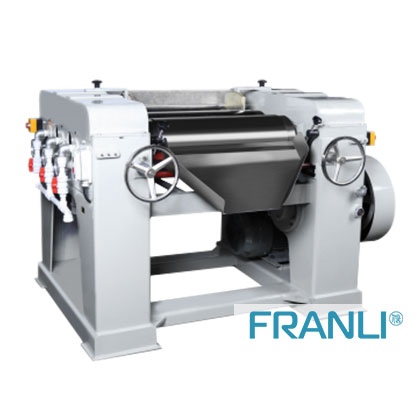
The primary function of three roll mills obviously is a distinguishing speed attained among three rolls. In fact, difference between number two and three rolls can be twice or four times superior in comparison to the difference between the initial and second rolls. Here the dispersion occurs at the second nip.
The initial nip handles the feeding of the second nip. However, the rolls need to be perfectly positioned. In those occasions where level of viscosity and product’s track is significant enough for generating pressure, it becomes essential for the rolls to get pressed together. When the level of viscosity is nominal or in case of the shear sensitivity cases, the rolls must not get pressed together.
It’s the differential speed as well as steady volume flow over the rolls that the initial and second nip possess identical ratios equivalent to that of the speed of roll. In short, when the rolls must be positioned due to a lower level of viscosity, the settings have to differ between the initial and the second one.
Superior flexibility
The dispersion occurs within shear field on the roll length. Till when the size of particle remains smaller in comparison to nip, the level of impact on the particles within the suspension remains zero. This aspect provides uniformity to the dispersing process. At the same time, it also makes it adjustable in terms of pressure or roll position. With the help of shear stress, the single-particle is not going to get hampered.
It means there is no change in shape, a certain surface, as well as the size of an irregular phase. This is crucial for various applications. Metal plates and ceramic pastes can be the best examples in this regard where it is not felt essential to alter the size of the particle or the surface of the ceramic within the suspension. Various raw materials remain in specification and must not get hampered through the course of dispersion, which means using explicitly the shear stress.
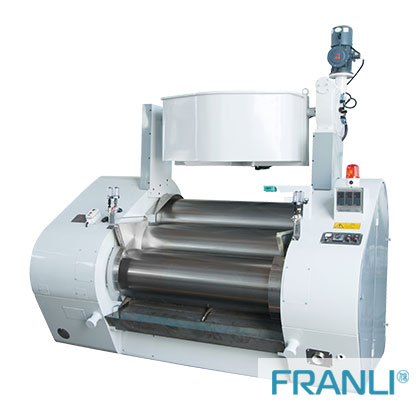
Optimized press mode makes it high on demand
Demand for three roll mills has significantly grown. Specifically, those mills with optimized pressure mode, as well as gap mode, are high on demand. Starting from those with mid-level to superior viscosity, these are useful everywhere. Modern-day three roll mills are capable of functioning on quite a nominal level line force on pressure mode or to straightaway change to gap mode. To operate three roll mills on gap mode basically is about positioning the rolls correctly and adjacently.
Traditional hydraulic cylinders do come with a comparatively higher level of internal friction. This turns things challenging to handle the line force at a lower level. In fact, it gets impossible on most occasions. However, contemporary machines are developed with friction of considerably lower levels. In fact, it is now possible to deal with line forces at even 3 N/mm.
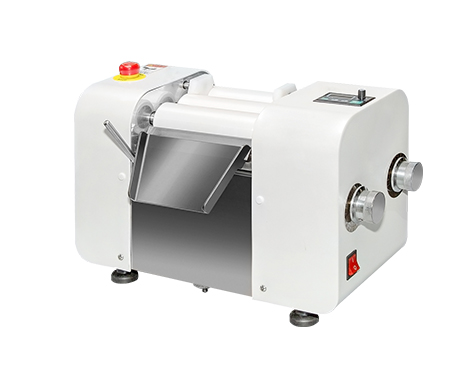
Factors making it more powerful
The prime segment of roll pressing is the eccentric shaft. A massive angle of rotation of the shaft causes a nominal variation in position of the axes. This indicates superior accuracy in distance setting among the roll shafts. The shaft can increase the force to more than 20 times.
In short, a nominal force in roll pressing causes massive pressure among the rolls. This is the reason behind the greater use of pneumatic rather than hydraulic. Noteworthy here is that a pneumatic motor can alter the eccentric shaft angle that alters the gap between roll shafts, as well as the gap among the rolls.
While functioning with a gap, the control unit of the contemporary roll mills shifts the motors towards the setting valve. The machine is not capable of measuring the real gap among the rolls. Rather, it simply shifts the step motors onto a setting value that is meant for a specific position as far as roll shafts are concerned. Calibration of increment occurs when the machine starts, which indicates that the rolls are mildly touching or the pressure level is nominal.
It is evident that the modern-day three roll mills make it apparent that the technology can really make it big in forthcoming future. Greater ability of cleaning, superior flexibility, and higher accuracy can make this equipment much more significant than ever. Most importantly, these roll mills encourage the process of scaling up. Starting from small-scale units to larger scale ones, these machines can be convenient on all occasions.
Franli can be the one-stop destination for all those looking for quality three roller mills. They can provide various models of high-end three roll mill, assuring smooth functioning and better cleaning.
Welcome to send inquiry to us and let’s make a win win business together !
Guidelines For Three Roll Mill
Three roll mills are widely used in a variety of chemical industries, from medium to high viscosity productions. FRANLI machine can break open all kinds of pigment, UV ink, offset ink, decorative paints, and Lubricants, it also can catch the greatest fineness in cosmetics/ lipstick and electronics industries.
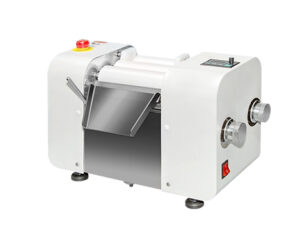
Three Roll Mill For Carbon Black|High Grinding & Dispersion
Three roll mill is the main equipment for grinding colored carbon black, as it is used extensively in rubber, plastics, paints, and inks, and some carbon black is added.
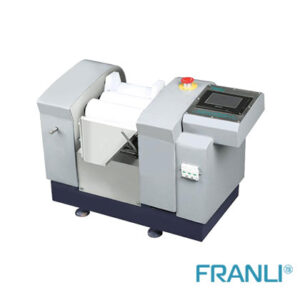
Laboratory Three Roll Mill|PLC Control System & Experimental
The laboratory three roll mill is equipped with the most advanced PLC functions to continuously improve the operability of the most primitive production equipment.

Three Roll Mill For Grease
The three roll mill plays a vital role in the grinding of grease. Grease is essentially a kind of lubricating oil, which is a solid or semi-solid product formed by one or more thickeners through the grinding and dispersing action of a three roll mill.

Three Roll Mill For Attapulgite
Three roll mill is the main equipment for grinding attapulgite. The attapulgite is ground and dispersed mainly because it is a natural colloid. Even if the size of the attapulgite reaches 0.1mm, it cannot be easily dispersed by the machine, so the final state of attapulgite formation has been greatly developed.
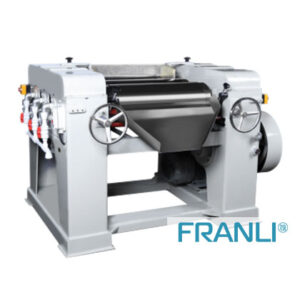
Rolls of a three-roll mill
The three-roll mill is mainly used for grinding materials of various viscosities and is one of the best wet grinding equipment. The dispersing and emulsification effect of the three-roll mill is excellent, especially for ink, paint, colloid, chocolate, plastic, cosmetics, etc., whether it is liquid slurry or paste material, the three-roll mill can work easily.

3 roll mill|Failure of the roll shaft & pulley
The 3 roll mill is a grinding and dispersing equipment, which plays an irreplaceable role in improving the quality of coating products.

